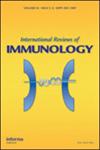CAR-T cells for cancer immunotherapy—the barriers ahead and the paths through
IF 2.9
4区 医学
Q2 IMMUNOLOGY
引用次数: 1
Abstract
Abstract This review discusses the major concerns and changes emerged during the rapidly extended clinical application of chimeric antigen receptor (CAR) T therapy based on our experience and understanding. In the past decades, the CAR-T cells have been questioned, sequentially, about their capability of inducing initial remission, their safety profile, their ability to sustain long-term persistence and response, and their potential to be industrialized. Significant advances, novel targeting strategies, innovative molecular structure, fine tuning of both CAR-T and host immune system, combination with other therapies, streamlined manufacturing, and etc., have been made to overcome these challenges. Although not perfectly resolved, rational pathways have been proposed to pass through the barriers. Here, we present the recent achievements on these pathways, and look into the possible future directions.用于癌症免疫治疗的CAR-T细胞——前方的屏障和穿过的路径
本文根据我们的经验和认识,讨论了嵌合抗原受体(CAR) T治疗在快速扩展的临床应用中出现的主要问题和变化。在过去的几十年里,CAR-T细胞先后被质疑其诱导初始缓解的能力,其安全性,其维持长期持久性和反应的能力,以及其工业化的潜力。新的靶向策略、创新的分子结构、CAR-T和宿主免疫系统的微调、与其他疗法的结合、简化的制造等方面的重大进展已经克服了这些挑战。虽然没有完全解决,但已经提出了合理的途径来跨越障碍。在这里,我们介绍了这些途径的最新成就,并展望了未来可能的方向。
本文章由计算机程序翻译,如有差异,请以英文原文为准。
求助全文
约1分钟内获得全文
求助全文
来源期刊
CiteScore
11.00
自引率
4.00%
发文量
24
期刊介绍:
This review journal provides the most current information on basic and translational research in immunology and related fields. In addition to invited reviews, the journal accepts for publication articles and editorials on relevant topics proposed by contributors. Each issue of International Reviews of Immunology contains both solicited and unsolicited review articles, editorials, and ''In-this-Issue'' highlights. The journal also hosts reviews that position the authors'' original work relative to advances in a given field, bridging the gap between annual reviews and the original research articles.
This review series is relevant to all immunologists, molecular biologists, microbiologists, translational scientists, industry researchers, and physicians who work in basic and clinical immunology, inflammatory and allergic diseases, vaccines, and additional topics relevant to medical research and drug development that connect immunology to disciplines such as oncology, cardiovascular disease, and metabolic disorders.
Covered in International Reviews of Immunology: Basic and developmental immunology (innate and adaptive immunity; inflammation; and tumor and microbial immunology); Clinical research (mechanisms of disease in man pertaining to infectious diseases, autoimmunity, allergy, oncology / immunology); and Translational research (relevant to biomarkers, diagnostics, vaccines, and drug development).

 求助内容:
求助内容: 应助结果提醒方式:
应助结果提醒方式:


